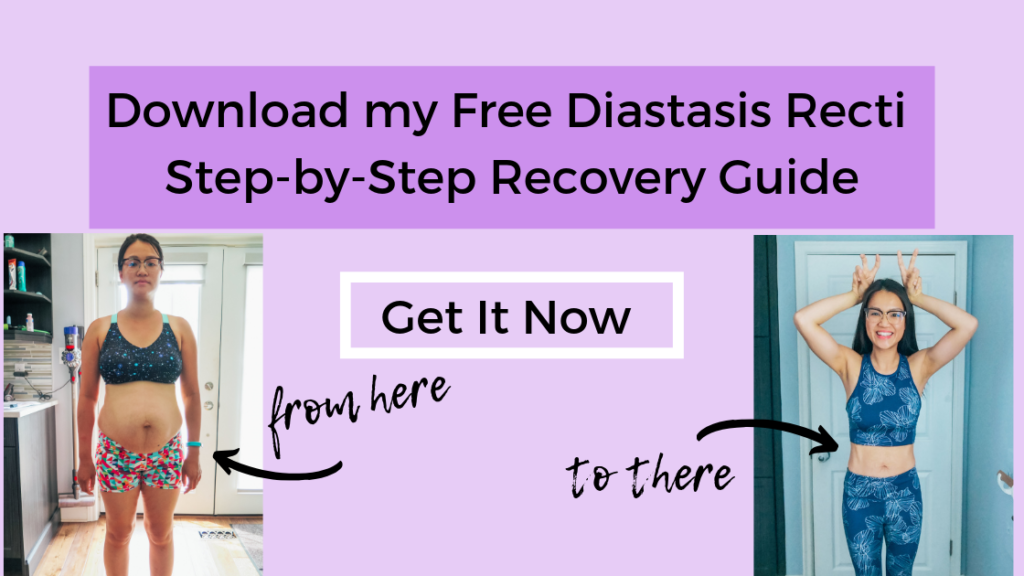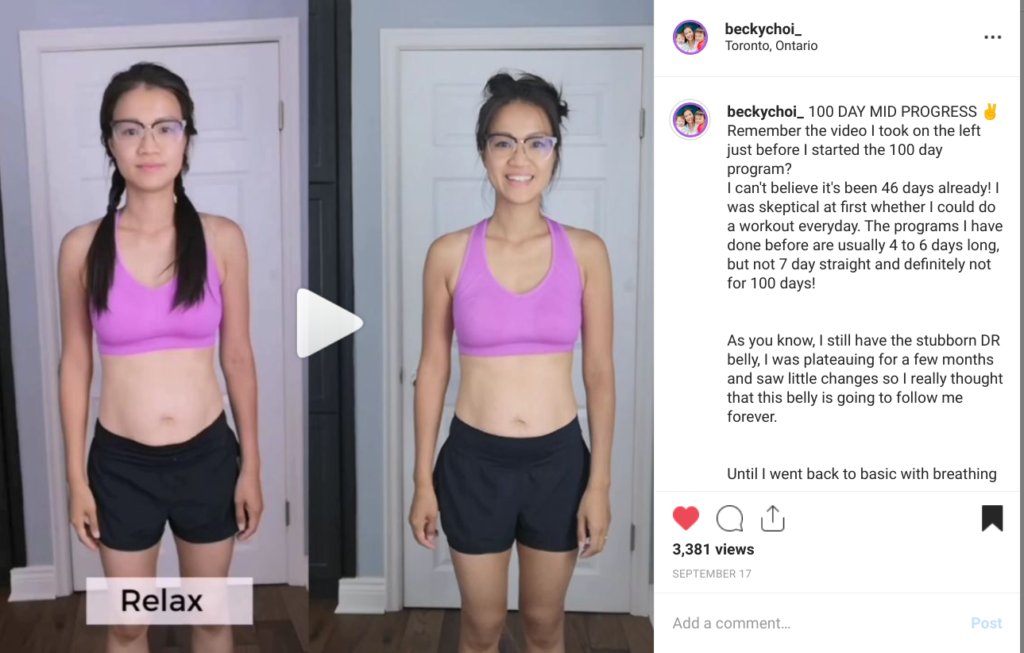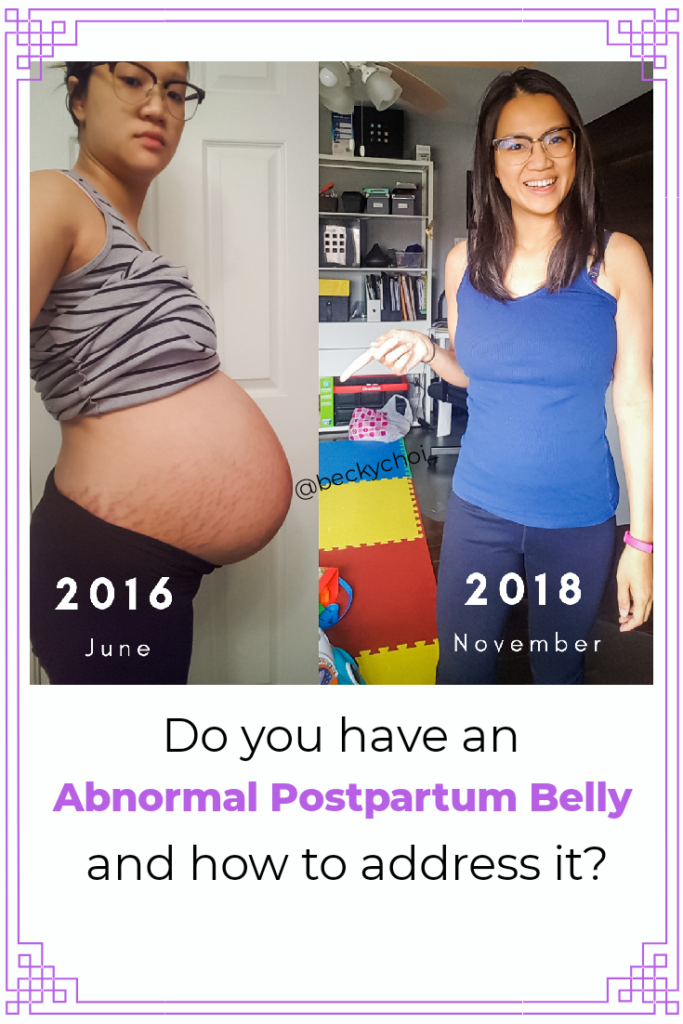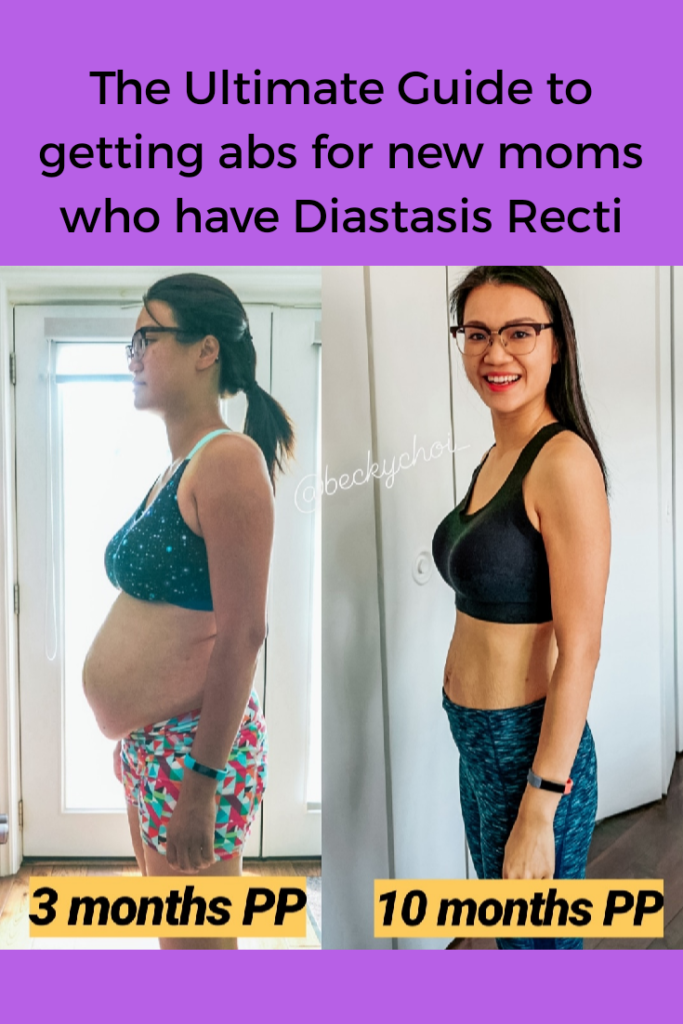
How do you get abs post-baby?
If you want tactics step by step on how to heal your diastasis recti, Download free guide here
Did you know that a high percentage of women who have had a baby will have some degree of diastasis recti afterward?
According to one study, roughly one-third of new moms suffer from abdominal separation a year after delivery and up to 60 percent in the first couple of months postpartum.
However, many moms who have diastasis recti are not aware of it, including me, after my first pregnancy with Jordan in 2016. I noticed I had this “pooch” doming out of my abdomen whenever I made a particular move, but I didn’t know what it was.
I thought it was my belly fat! Then, this mummy tummy was worse every time I arched my back or had poor postures.
While some people might choose to undergo surgery to repair diastasis recti which were recommended to me by my family doctor, I believe that many people can heal abdominal separation naturally with effective and targeted full-body exercises.
Our main goal is to pull the abdominal muscles back together with a total body solution and a balanced bloat-free diet. However, before we do any exercise or dietary, be sure to check with your doctor to uncover any unforeseen conditions such as a hernia.
What is Diastasis Recti?
Diastasis recti (also called rectus diastasis) is a condition that’s characterized by separation of the two abdominal muscles that meet in the middle.
QUESTION: So why is Diastasis Recti called Di-a-sta-sis – Rec-ti?
Diastasis = Separation of parts of the body that are normally joined together Recti = muscles
When people think of abs, they are referring to the rectus abdominis muscles which is our six-pack muscles.
Diastasis recti is due to stretching of the connective tissue called the linea alba. The linea alba helps join muscles in the core together near the center of your belly, but this was overstretched and weakened due to childbearing. Your hormone, genetics, and how you carry the baby or babies also play a major factor.
People without diastasis have their six-pack muscles close to one another on either side of the belly button and there isn’t a gap between them. But people with diastasis recti will have a separation of the muscles either above, at, or below the belly button or all three areas.
In other say, it means your belly sticks out because the space between your right and left abdominal muscles has widened. This leads to internal organs hang more forward than they should be, so it looks like you are pregnant again!


Look at how pointy my belly was. Since it was so pointy, the connective tissue got really stretched out. Hence I had over 4.5 fingers gap. I never officially checked after the first pregnancy because I didn’t know this condition exists, but if you are reading this post, you are in the right place!.
DR Symptoms & Signs
How do you know if you have Diastasis Recti? The most common symptoms include:
1. Visibly seeing a bulging belly hanging.
2.Visibly seeing a “mountain” forming as you do a mini crunch.
3. Back pain, especially in the low or mid-back. The hips can also experience pain if the core is not strong enough to properly distribute your body weight and maintain good posture.
4. You may be having trouble controlling urination, for example, when you laugh or sneeze, you may experience leakage. This is caused by a weak pelvic floor.
5. Digestive issues, including constipation and bloating. A weak core can contribute to reduced control of the bowels and displacement of the intestines. The belly might look very different and bloated at the end of the day comparing to the beginning of the day.

Here is How To Test Yourself for Diastasis Recti:
There are three areas you will be checking:
1) Check it first thing in the morning before you eat or drink because your tummy is at the flattest, and the connective tissue hasn’t expanded yet.
2) Lie on your back with your knees bent and feet flat on the floor.
3) Inhale and exhale as you lift your head a little above the ground. Angle wise, about 20 degree
Begin to put your fingers in the middle and gently press your belly button. Feel how many fingers you can fit in between the muscles. Then, feel how deep your finger can sink in. Mark that down.Repeat the steps and press 2 inches above the belly button and 2 inches below the bellow button.
Note: The finger gap determines how severe your diastasis is. How far your finger can sink-in determines how weak your connective tissue is. They are both equally important to deal with.
For example, for me, I could fit almost five fingers between the muscles, and I can sink 1.5 knuckles into the tissue.
It is important to note that this is only an initial diagnose. When you progress with exercise, you can get a strong core with a 3 finger gap. Or you could have a 2 finger gap but a weak core.
Once diagnosed, how do you fix diastasis recti? Treatment options that can help with diastasis recti repair include:
Pelvic Physical therapy. I would go to one who specialized in the pelvic floor because they are generally more experienced in dealing with patients with diastasis recti and is more knowledgeable in targeted exercises.
Surgery, aka tummy tuck. I will only go with this route if you have consistently been doing your exercise for over one year and not seeing a lot of changes, or recommended by your doctor.
Total body solution with targeted and modified exercises – I talk about this a lot in my free step-by-step diastasis recti recovery guide. The type of exercises you can do and also how to progressively advance your intensity.
Bloat free diet. Since your intestines are already in displacements, it is essential not to stress the area with less bloated and targeted food that also helps bring the elasticity of the muscles.
Wear an abdominal binder. I wore my wrap at six weeks postpartum. The wrap, along with one simple breathing exercise, has helped me bring down my gap from 4.5 fingers to 3.5 fingers. The abdominal wrap is traditionally used in many countries, especially in Asia, to help women get back in shape after birth. You will find the belly wrap that I use in my recovery guide. It’s important to note that not every wrap is suitable for diastasis recti moms. Some could cause downward pressure would cause you more problem later on.
Diastasis Recti Repair & Natural Ways to Get Your Abs Back
1. Load Your Abdominal Pressure correctly and carefully
Diastasis recti are believed to be mostly due to abdominal pressure, so you want to avoid doing anything that makes this pressure worse.
A few movements to avoid (but not forever):
– Avoiding any core movement like crunches, bicycle crunches, roll-ups, pull-ups, planks or sit-ups that isolate the abdominal muscles until your tummy is ready so.
– Yoga movements like cat and cow, downward dog, planks should be avoided in the beginning.
– Don’t hunch over to nurse your baby or pick up your baby. Proper form should be used at all times.
– Avoid arching or sloughing your back when you sit or stand
– Avoid high heels if you can’t stand with good postures
– Watch your posture as you stand, walk and jog. Chest up, abs in (TVA when possible), and relax the shoulders. I talk much more about posture in this post
These movements can further increase pressure in the abdominal region and push your organs outward instead of back together. They may make muscle separation worse if the connective tissue is weak.
2. Physio Therapy
I didn’t see a physical therapist after my first child was born. I was silly to think that it is reasonable to have a huge belly and thought that was fat. After I went through a whole program of cardio exercises, I lost a lot of weight except for the waist. It took me a long time to figure out I had diastasis recti, so don’t be silly like me. Do a self-check, and find a local physio who specializes in women’s health.
She will be able to pinpoint the area you need to work out and the severity of the DR. She would recommend the exercises you can start working on right away.
3. Specific Core-Strengthening Exercise
Speak with your physio to see which is the most suitable to start. If you can’t get to a physio, breathing exercises are always a go-to. Gently lie on your back, and imagine a three and a nine o’clock at your hip bones. As you exhale, draw your belly button toward your spine, bring the 3 and 9 o’clock together. Hold it for 10 seconds as you breath out, 30 times and one time a day.
Another excellent method I learnt is the scarf method, and this is especially good if you are a newer mom who has severe diastasis recti. With the breathing exercises and the scarf method, I was able to decrease one finger gap from 4.5 fingers to 3.5 fingers. You need to be consistent two times a day every day.
Slowly, you will work your way to more advanced exercises as your gap is closing. It is important to note that it will take time, and you need to be patient with everything mentioned here.
Consistency is key; TVA exercise should be practiced every day even if you only have 1 finger gap, it is important to reinforce that connective tissue so that it gets stronger and be able to endure more pressure.
4. Nutrition
Nutrition plays a significant role in healing diastasis. I cannot stress enough how important it is. I look like three months pregnant in the morning, but after dinner, I look like seven months. If you want abs, this needs to be SPOT-ON!
To restore the elasticity of the skin and broken connective tissue, it needs vitamin A, C, zinc, omega. Superfood like kale, Gogi berry, matcha and maca roots are great to have.
Alongside that, we should adequately portion out our meals throughout the day, keeping in mind how many cups in carbs, protein, veggies, etc. are served. Lastly, don’t forget to DRINK YOU WATER!
Don’t forget to download my FREE Step-by-step guide, I go deeper into the topics Get it HERE




The muscle opening often shrinks after giving birth, but in some studies of women with diastasis recti, the muscle wasn’t back to normal even a year later.
yes that’s correct. 1 in 3 women will still have diastasis at 12 months postpartum, they may or may not know it.